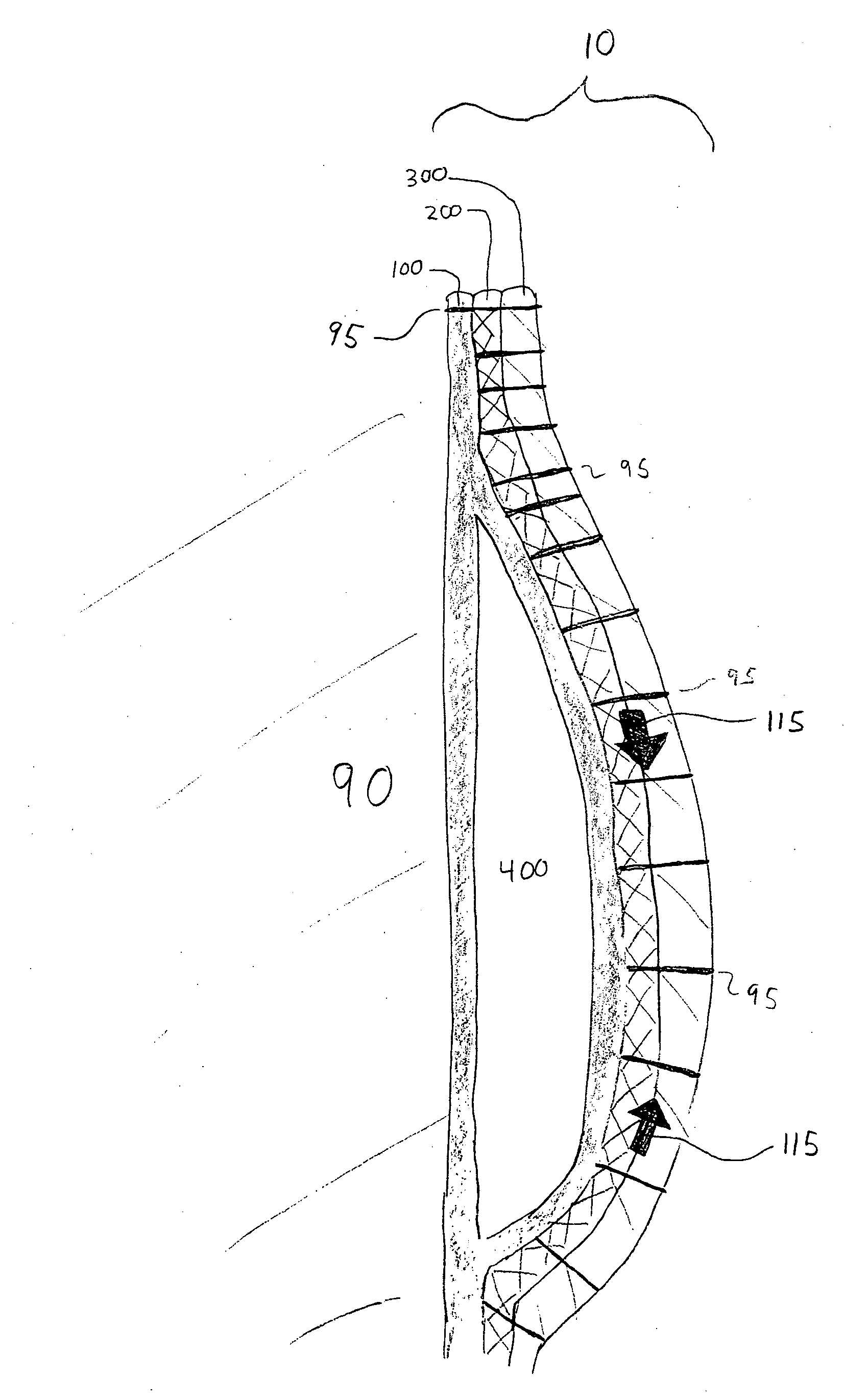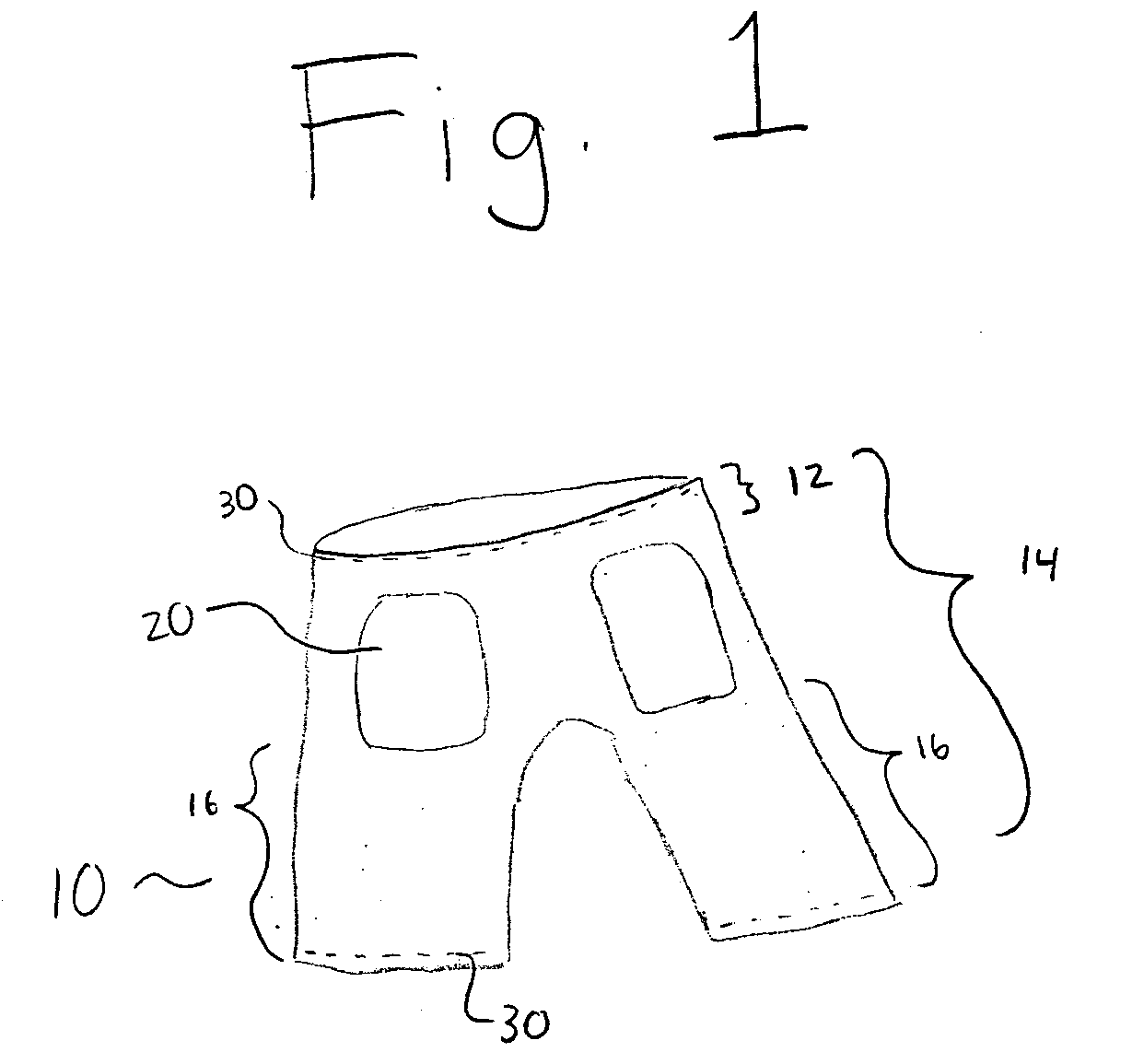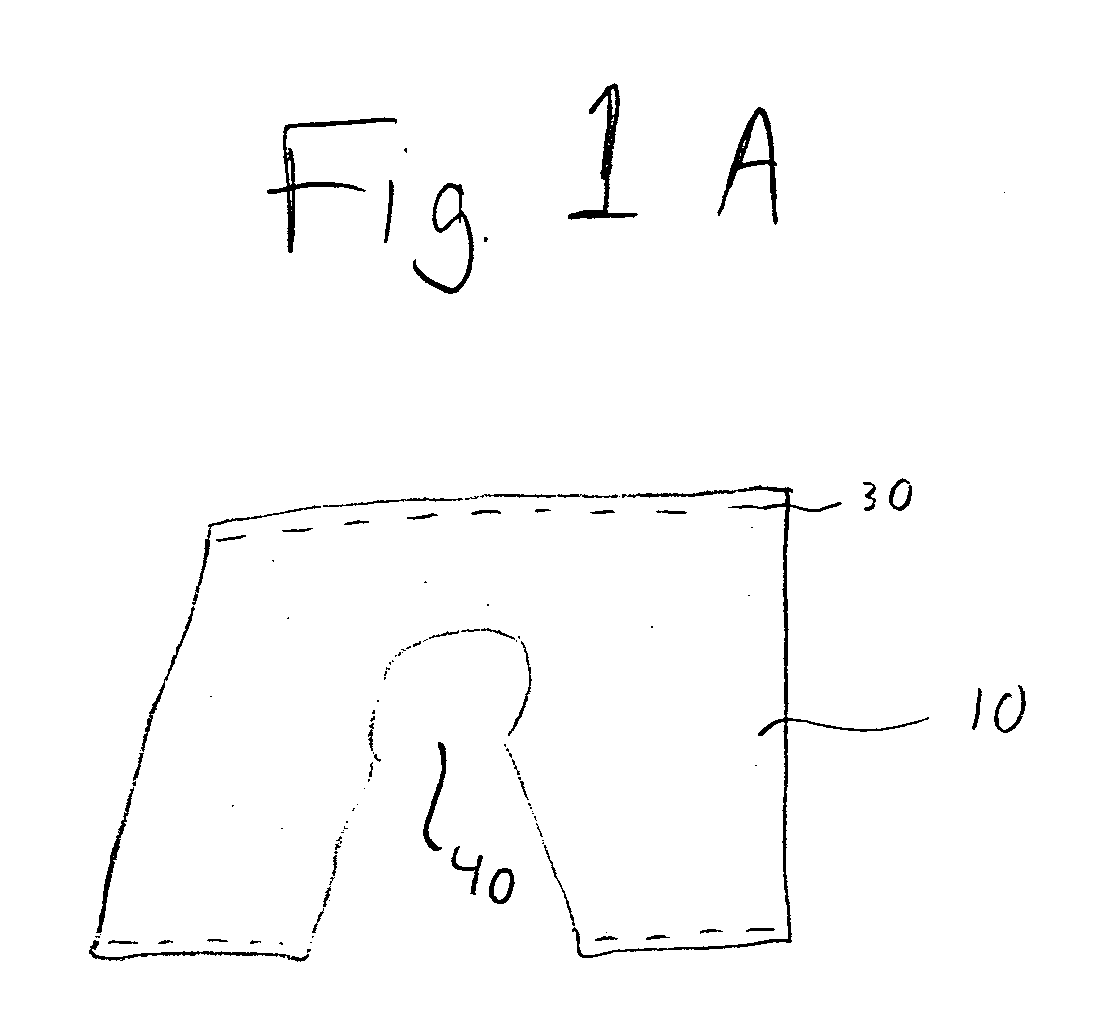Support for prevention of decubitus ulcers
a technology for decubitus ulcers and support, applied in the direction of protective clothing, garments, applications, etc., can solve the problems of compromising the viability of skin and underlying structures, reducing and inadequate blood supply, and common bed sores, and achieves sufficient friction and preventive sores.
- Summary
- Abstract
- Description
- Claims
- Application Information
AI Technical Summary
Problems solved by technology
Method used
Image
Examples
Embodiment Construction
[0021]The present invention is a device for the prevention of decubitus ulcers comprising at least two layers of fabric or material. The invention may be in the form of a garment to be worn over a part of a patient's body. The invention may be a garment or adapted to cover or wrap around any portion of a patient's body, such as the head, shoulders, elbows, buttocks, lower legs, ankles, or heels. For convenience, we refer to any apparel, wrap, cover, or bandage embodying the invention as a garment. The garment may be a bandage affixed to a patient's body, or a bandage or material that is wrapped around a portion of a patient's body. The garment is comprised of two or more layers. The layers may be separately applied in a multi-step manner to generate the structure or, preferably, the two or more layers are permanently or selectively affixed to each other by any of many known methodologies including hook and loop fasteners, zippers, or sewing.
[0022]Presently, the preferable embodiment...
PUM
 Login to View More
Login to View More Abstract
Description
Claims
Application Information
 Login to View More
Login to View More - R&D
- Intellectual Property
- Life Sciences
- Materials
- Tech Scout
- Unparalleled Data Quality
- Higher Quality Content
- 60% Fewer Hallucinations
Browse by: Latest US Patents, China's latest patents, Technical Efficacy Thesaurus, Application Domain, Technology Topic, Popular Technical Reports.
© 2025 PatSnap. All rights reserved.Legal|Privacy policy|Modern Slavery Act Transparency Statement|Sitemap|About US| Contact US: help@patsnap.com



